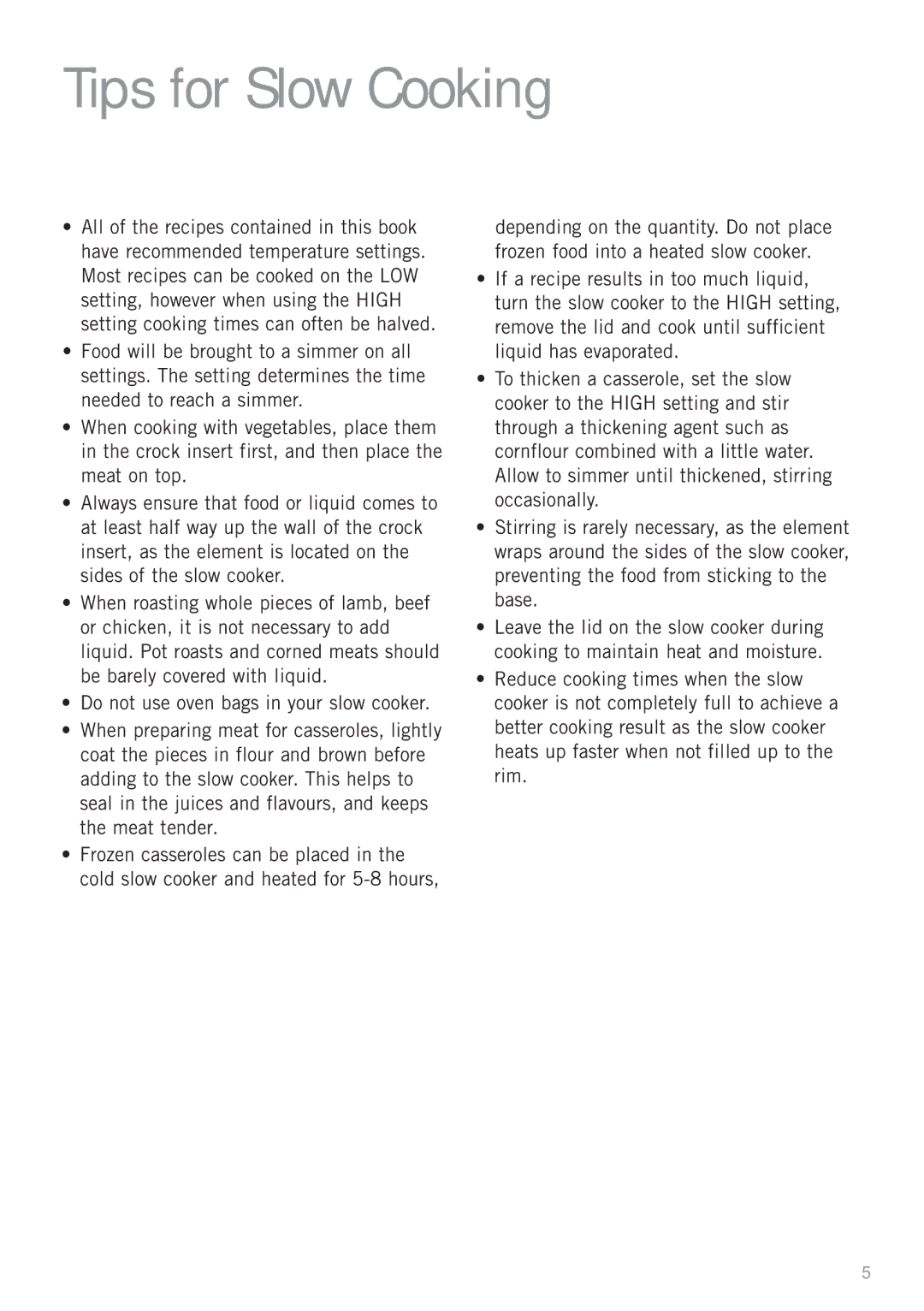Tips for Slow Cooking
•All of the recipes contained in this book have recommended temperature settings. Most recipes can be cooked on the LOW setting, however when using the HIGH setting cooking times can often be halved.
•Food will be brought to a simmer on all settings. The setting determines the time needed to reach a simmer.
•When cooking with vegetables, place them in the crock insert first, and then place the meat on top.
•Always ensure that food or liquid comes to at least half way up the wall of the crock insert, as the element is located on the sides of the slow cooker.
•When roasting whole pieces of lamb, beef or chicken, it is not necessary to add liquid. Pot roasts and corned meats should be barely covered with liquid.
•Do not use oven bags in your slow cooker.
•When preparing meat for casseroles, lightly coat the pieces in flour and brown before adding to the slow cooker. This helps to seal in the juices and flavours, and keeps the meat tender.
•Frozen casseroles can be placed in the cold slow cooker and heated for
depending on the quantity. Do not place frozen food into a heated slow cooker.
•If a recipe results in too much liquid, turn the slow cooker to the HIGH setting, remove the lid and cook until sufficient liquid has evaporated.
•To thicken a casserole, set the slow cooker to the HIGH setting and stir through a thickening agent such as cornflour combined with a little water. Allow to simmer until thickened, stirring occasionally.
•Stirring is rarely necessary, as the element wraps around the sides of the slow cooker, preventing the food from sticking to the base.
•Leave the lid on the slow cooker during cooking to maintain heat and moisture.
•Reduce cooking times when the slow cooker is not completely full to achieve a better cooking result as the slow cooker heats up faster when not filled up to the rim.
5
